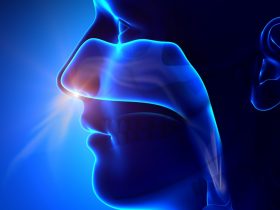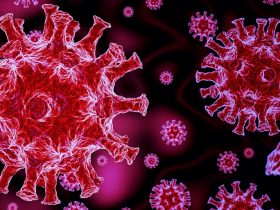At the recent American Rhinologic Society, Combined Otolaryngology Spring Meeting (ARS-COSM) in Boston, Massachusetts (May 4-5, 2023), a research team from Vanderbilt University Medical Center presented a study investigating the inflammatory characteristics of central compartment atopic disease (CCAD) and their comparison to chronic rhinosinusitis with nasal polyps (CRSwNP) subtypes.
CRSwNP is an inflammatory disease of the upper airways characterized by high morbidity and progressive bilateral polyp growth of the nasal mucosa. The clinical symptoms include facial pain, anosmia (loss of smell), nasal obstruction, and anterior/posterior nasal discharge leading to significant impairments in productivity and quality of life.
CCAD represents a local inhalant allergy process that affects the central nasal structures of ethmoid origin. It is a newly described CRS phenotype with notable central nasal inflammatory changes and a lack of peripheral sinus involvement. Little is known about the inflammatory mechanisms of this disease.
The present study recruited 253 patients with CRSwNP who underwent endoscopic sinus surgery (ESS) between 2015 and 2021. A standardized approach was adopted for collecting and processing samples from the recruited patients’ middle meatus. All patients were classified into distinct phenotypes based on their clinical and pathological characteristics, including CCAD (24 patients), aspirin-exacerbated respiratory disease (AERD) (42 patients), allergic fungal rhinosinusitis (AFRS) (50 patients), and CRSwNP (137 patients).
Study results highlighted that the demographics and clinical characteristics of CCAD patients mirrored those previously described in the literature. Moreover, CCAD patients were found to have a high prevalence of allergic rhinitis, a low prevalence of asthma, and a much lower number of prior surgeries compared to the other patient groups. Furthermore, comparison results of cytokine values showed that CCAD patients had unique cytokine expression profiles with lower levels of IL-6, 8, 10, INF-y, and eotaxin relative to other groups. Moreover, CCAD patients showed significantly reduced levels of type 2 cytokines (IL-5, IL-13) relative to AFRS and AERD patient groups.
Multivariate analysis revealed that CCAD was the most homogenous group regarding inflammatory profile, suggesting that these patients lack inflammatory diversity and have reduced inflammatory burden observed in CRSwNP patients. Finally, cluster analysis indicated that 77% of CCAD patients were clustered into groups identified primarily by the reduced levels of type two mediators (IL-5 and IL-13).
The authors of the study include Kolin E Rubel MD, Rory J Lubner MD; Andrea A Lopez BS; Ping Li MD; Jeffanie Wu; Sarah K Wise MD; John M DelGaudio MD; Rakesh K Chandra MD, Naweed Chowdhury MD. MPH; and Justin H Turner MD, Ph.D., from Vanderbilt University Medical Center, Tennessee, USA.
Reference:
Rubel K, Lubner R, Lopez A, et al. Inflammatory Characteristics of Central Compartment Atopic Disease. ARS-COSM. May 4-5, 2023.







